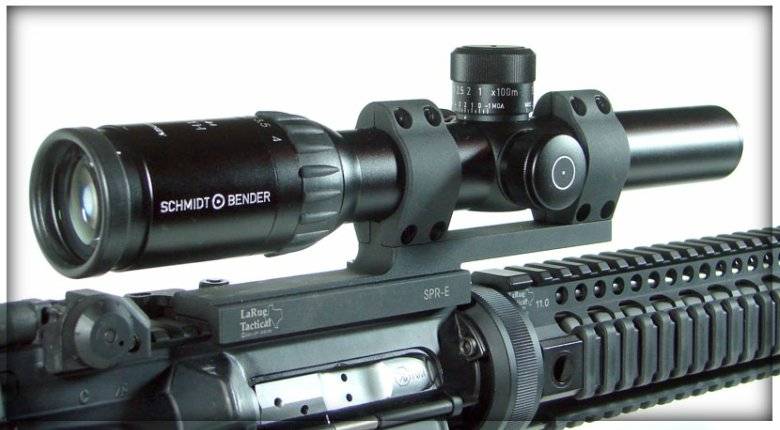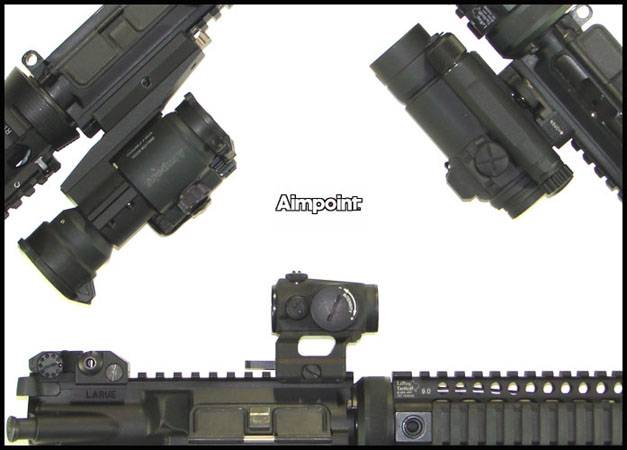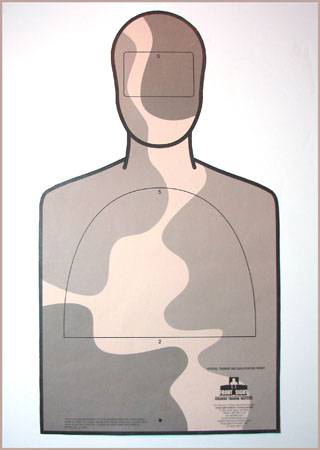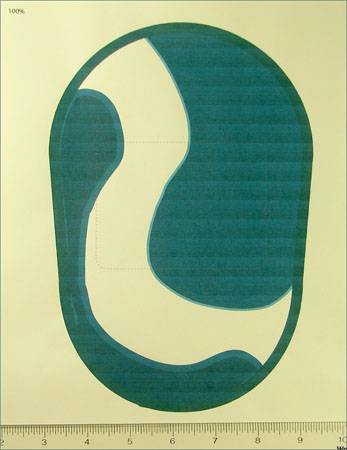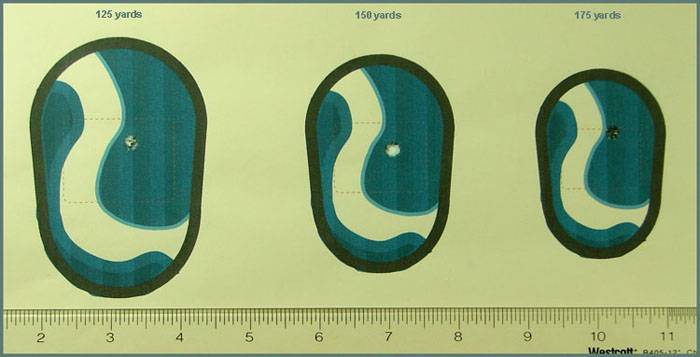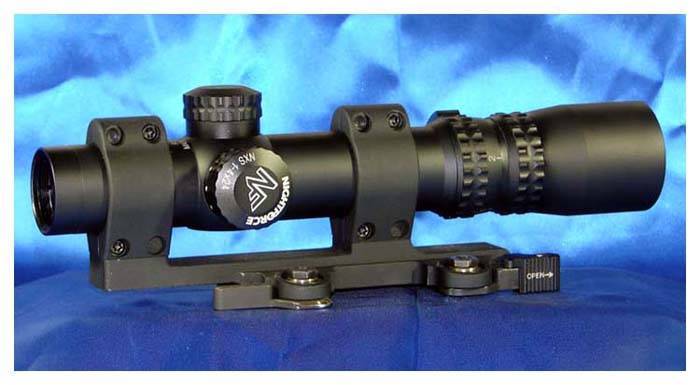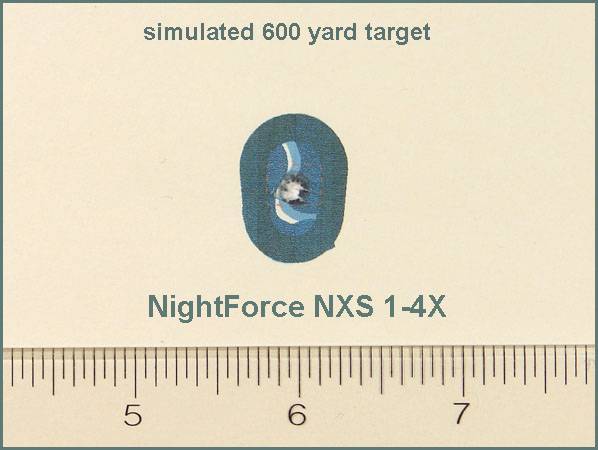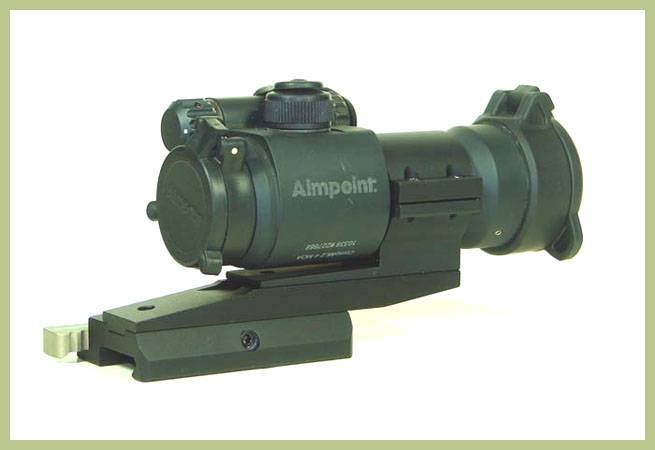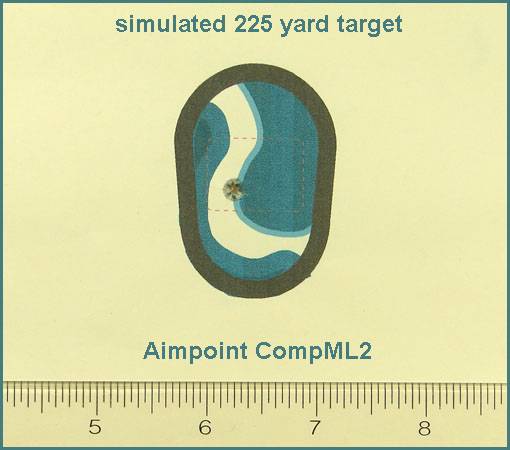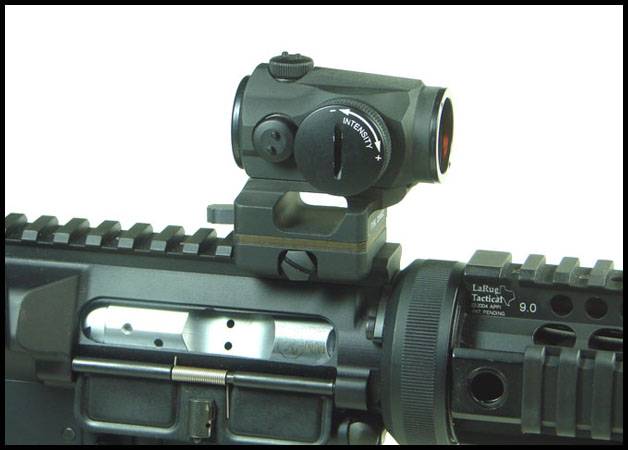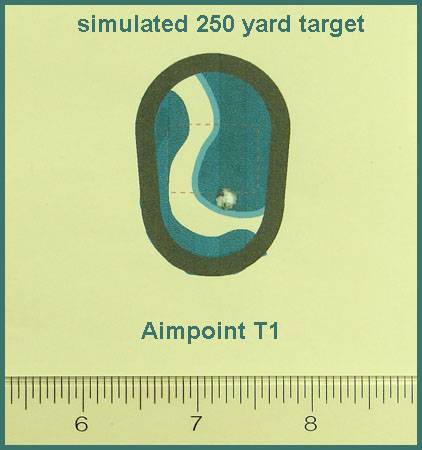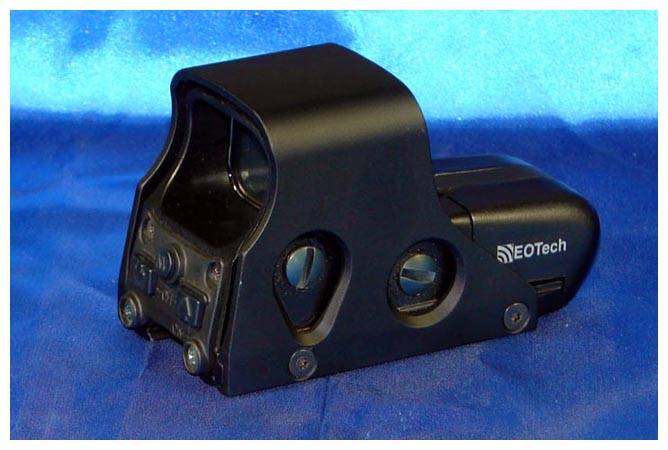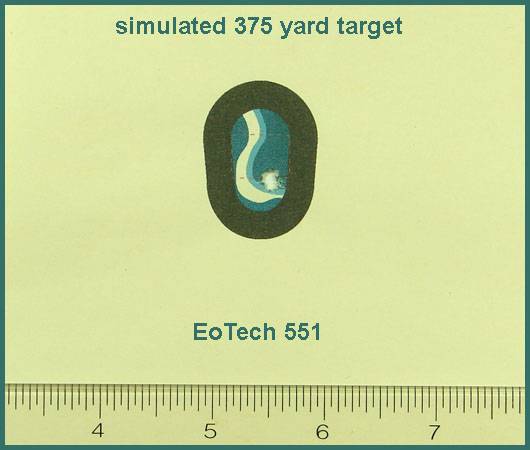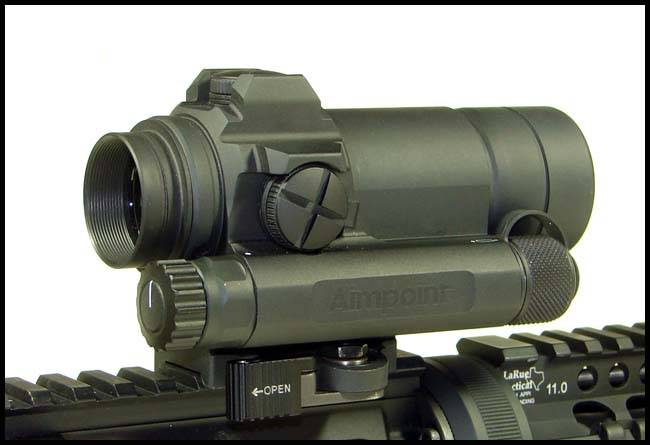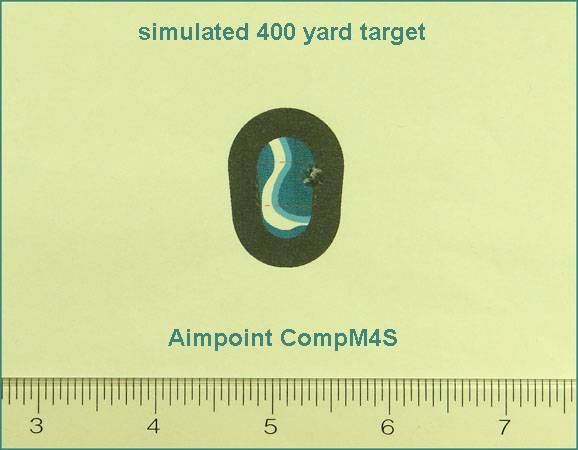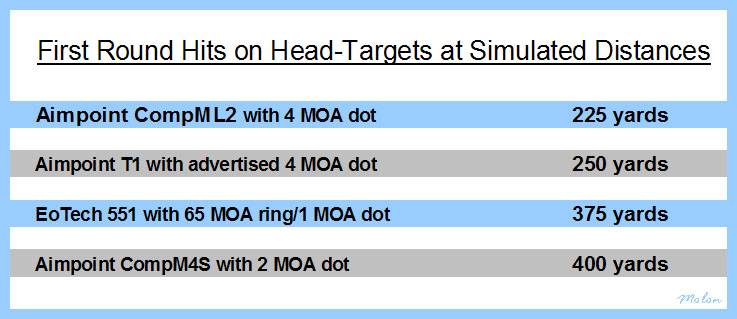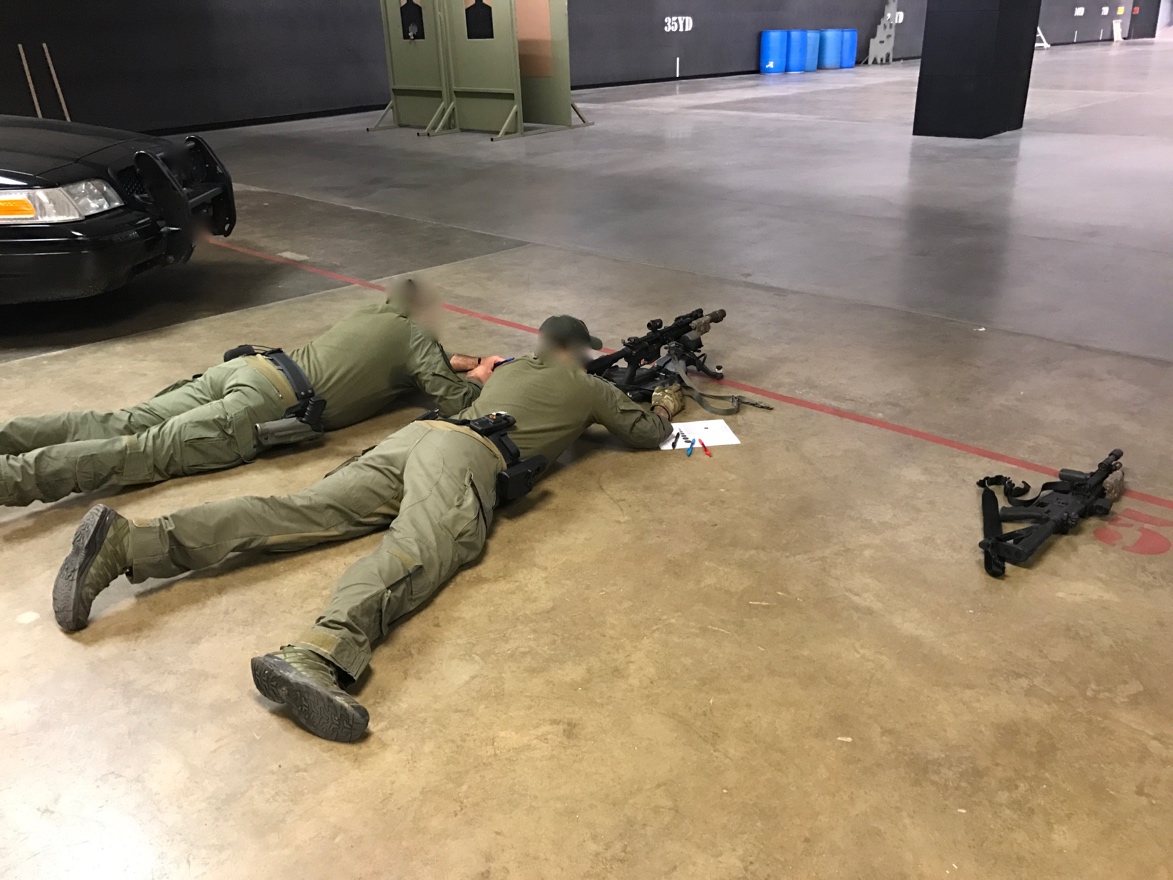Observations On The Effect Of Parallax Error
When Shooting With An Aimpoint Comp M5 And A Trijicon MRO

When Shooting With An Aimpoint Comp M5 And A Trijicon MRO
Some manufacturers of red-dot sights have made claims that their red-dot sights are “parallax free“. Most of us are already aware that this is simply not true at all distances. Inherent parallax error with a red-dot sight is typically greatest at CQB distances (MOA wise) and decreases as the distance to the target increases.
In this ballistic exercise we’ll be looking at the amount of parallax error occuring during objective, controlled, live-fire testing at the distances of 7 yards, 15 yards, 25 yards and 50 yards when shooting with an Aimpoint Comp M5 and a Trijicon MRO mounted on a precision AR-15. The Aimpoint Comp M5 has a 2 MOA red dot, as does the Trijicon MRO.
All shooting for this exercise was conducted from my bench-rest set-up using one of my precision AR-15s. This AR-15 has a 20” Lothar Walther barrel with a 223 Wylde chamber and 1:8” twist and it routinely produces 0.75 MOA 10-shot groups at 100 yards (with a high magnification scope). The ammunition used for this exercise was one of my match-grade hand-loads topped with the Sierra 52 grain MatchKing. Wind conditions on the range were monitored using a Wind Probe. The set-up was very similar to that pictured below.
The barrel . . .
10-shot group at 100 yards . . .
The Wind Probe . . .
The Details
The methodology for this ballistic exercise was as follows . . .
Shooting from the bench-rest set-up with the Aimpoint Comp M5 atop the precision AR-15 at the initial distance of 7 yards, an 8-shot control group was fired with the red-dot centered in the sight window. Next, an 8-shot parallax test-group was fired in the following manner:
2 shots fired with the red-dot positioned in the extreme 12 o’clock position of the sight window.
2 shots fired with the red-dot positioned in the extreme 3 o’clock position of the sight window.
2 shots fired with the red-dot positioned in the extreme 6 o’clock position of the sight window.
2 shots fired with the red-dot positioned in the extreme 9 o’clock position of the sight window.
Additional 8-shot parallax test-groups were then fired sequentially at 15 yards, 25 yards and 50 yards in the manner described above. This simple methodology is illustrated in the two pics shown below. The solid black dot on the target was the point-of-aim.
The 8-shot control group at 7 yards . . .
The 8-shot parallax test-group at 7 yards . . .
Aimpoint Comp M5 Results
The 8-shot control group fired at 7 yards had an extreme spread of 0.039”, which at 7 yards is 0.53 MOA. The extreme spreads of the parallax test-groups are shown in the table below.
Trijicon MRO Results
I repeated the ballistic exercise described above using a 2nd-generation Trijicon MRO with a 2 MOA red-dot. The results are shown in the table below.
I also conducted the 50 yard portion of the parallax test using another 2nd-generation Trijicon MRO with a 2 MOA red-dot. The results were nearly identical to that of the first MRO. The extreme spread of the 8-shot parallax test-group was 7.46”, which at 50 yards is 14.3 MOA.
Comparisons
The tables and graphs below show the results from both the Aimpoint Comp M5 and the Trijicon MRO, side-by-side, for comparison.
Results in minutes of angle . . .
Results in inches . . .
Per Aimpoint, the objective lens of the Aimpoint T2 has a diameter of 18mm. Per Trijicon, the objective lens of the MRO has a diameter of 25mm. Therefore, the objective lens of the MRO is 1.38 times larger than the objective lens of the T2, yet the parallax error of the MRO at 50 yards (7.73”) is 8.3 times larger than the parallax error of the T2 (0.93”) at 50 yards.
......
Aimpoint T2 Parallax Error At 50 Yards
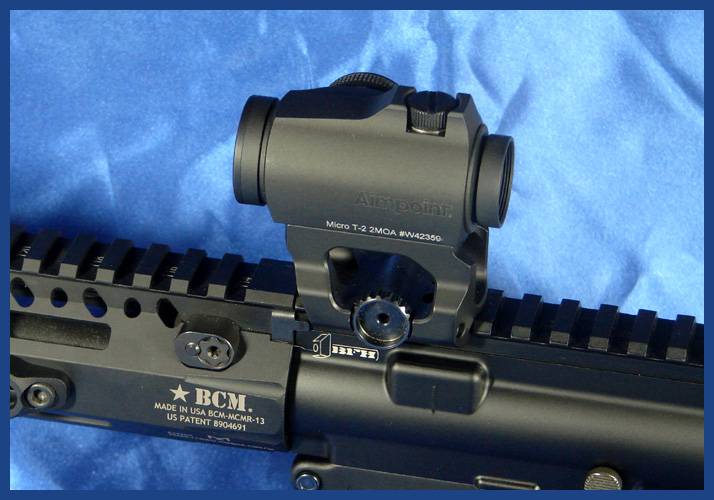
An 8-shot parallax test-group fired from 50 yards using an Aimpoint T2 had an extreme spread of 0.907", which at 50 yards equates to 1.7 MOA.
...
The target shown below is the actual 50 yard parallax-test target for one of the Gen-2 Trjicon MROs that I tested. The parallax error is 7.7 inches. The target also clearly demonstrates the asymmetrical parallax pattern of the MRO. I’d like to see someone do the trigonometry for those "hold-offs", at various distances, on the fly, in the urban prone position.
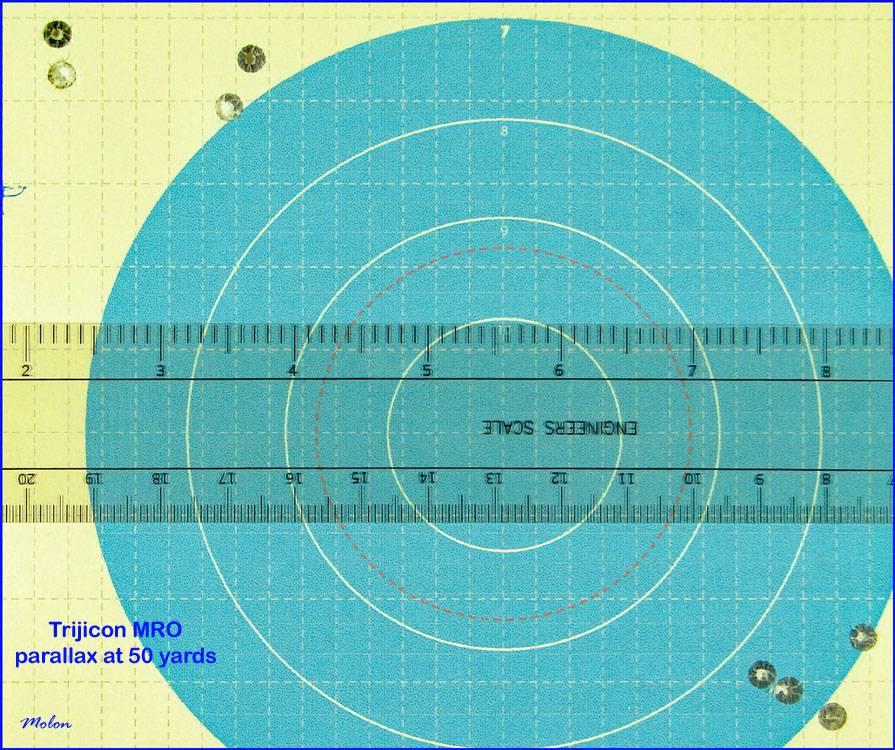
Now, let’s superimpose the above parallax-test target on a realistic training target at 50 yards, for both a head-shot and an upper thorax shot.
That’s a whole lot of missed shots, and those shots were taken with a precision AR-15, using match-grade hand-loads, shooting from a bench-rest set-up. Now substitute a chrome-lined, NATO chambered barrel using factory ammunition and shooting from over/around/under a hard-cover position and the amount of missed shots drastically increases.
The next graphic shows the 50 yard parallax-test target for the Aimpoint T2 superimposed on the realistic training target along with the MRO.
…..
Last edited:

